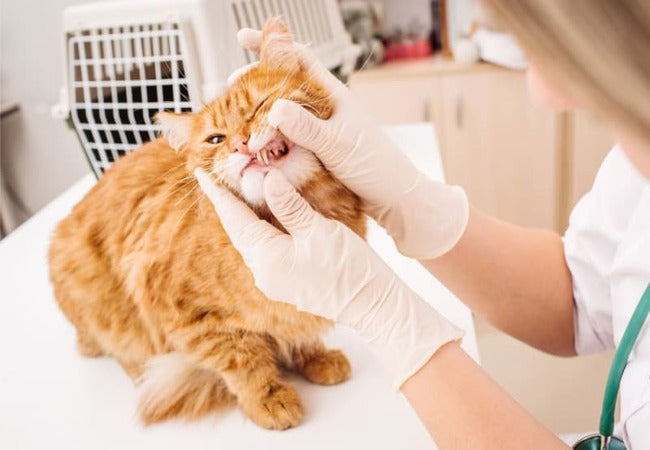Vet‑Approved 2025 Guide: Cat Tooth Extraction Recovery – Pain Relief, Care & Comfort 💉🐱✨

In this article
Vet‑Approved 2025 Guide: Cat Tooth Extraction Recovery – Pain Relief, Care & Comfort 💉🐱✨
By Dr. Duncan Houston BVSc
Tooth extraction in cats is common—and many will live normal lives with missing teeth. However, dental surgery requires careful at-home care to ensure comfort, prevent infection, and support healing. In this detailed 2025 guide, Dr. Duncan Houston BVSc discusses feeding plans, pain control, oral hygiene, identifying complications, and enriching care with tools like Ask A Vet. 🐾
🔍 Why Cats Need Tooth Extractions
Cats often require dental extractions for resorptive lesions, abscesses, fractured or diseased teeth, identified during anesthetized dental exams and x-rays. Full-mouth extractions are recommended for severe stomatitis—and studies show 90% of affected cats feel better post-op.
🍽️ Diet & Hydration: What to Feed—and When
Soft foods are essential post-extraction:
- Offer wet food or kibble soaked in broth or warm water for 10–14 days.
- Encourage hydration with wet diets or water fountains.
- If inappetence persists beyond 24 hours, consult your vet about appetite stimulants or specialized nutrition.
Feed small, frequent meals and gradually return to normal amounts once comfort improves.
💊 Pain Management & Medications
Your vet will typically use local nerve blocks and prescribe NSAIDs or opioids post-surgery. Signs of pain include drooling, pawing at the mouth, hiding, vocalizing, or refusal to eat. Never stop meds early—get in touch with your vet if the pain persists.
🛡️ Oral Care During Healing
- Avoid brushing or rinsing for 10–14 days post-op.
- Gently inspect the mouth for swelling, bleeding, or foul odor.
- Kittens and shy cats may need pheromone diffusers (e.g., Feliway) and calm environments for safety and comfort.
⚠️ Recognizing Post-Op Warning Signs
Watch for complications:
- Heavy bleeding or large blood clots after day 1.
- Persistent bad breath, foul discharge, facial swelling under the eyes or jaw.
- Vomiting, diarrhea, lethargy, inappetence beyond 24+ hours.
- Labored breathing, excessive drooling, difficulty swallowing—seek emergency care.
📅 Recovery Timeline
- First night: Quiet rest — grogginess is normal.
- Days 2–7: Gradually introduce soft food again; soft tissue heals quickly.
- Weeks 1–2: Sutures dissolve, pain subsides—keep monitoring.
- 2+ weeks: Begin reintroducing normal kibble or dental diet as directed.
- Long term: Maintain dental health with brushing, VOHC-approved diets/treats, water additives, and annual vet dental checks.
🛠️ Enrichment & Comfort Tools
- Ask A Vet: Use remote check-ins for questions, incision photos, or medication guidance.
📞 When to Contact Your Vet
- Bleeding beyond day 2
- Swelling, discharge, facial bulging
- Not eating/drinking >24 hrs or vomiting/diarrhea >24 hrs
- Persistent lethargy or respiratory issues
🏁 Final Thoughts
Tooth extraction can restore comfort and quality of life—but recovery needs thoughtful care. With soft food, prescribed pain meds, close monitoring, and enriched rest, most cats bounce back quickly. Include supportive tools like Ask A Vet to ensure a calm, pain-free healing journey. Here's to a happy, healthy, and purr-filled recovery! 🐾❤️


